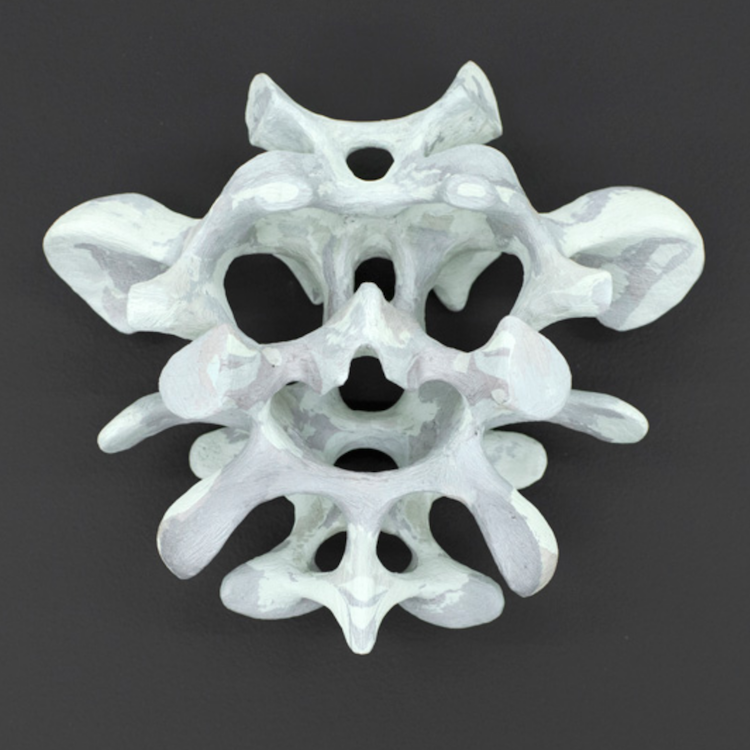NEW YORK — Matt Hoyt’s latest exhibition Chrysalis at Bureau Gallery (March 26 – April 30, 2017) features a collection of several of his largest individual objects to date, as well as three arrangements of his small works of variable combinations of resin, paper, putty, spray paint and even super glue. Both his large and small works are simultaneously familiar and eerily peculiar as the viewer strives to seek out relatable form and meaning.
Featured image: Matt Hoyt, Untitled, 2014-2017
For nearly two decades, Hoyt has been shaping a bevy of hand-made objects out of various clays and putties (yielding nonuniform coloration as well). The majority of his works are very small, shaped by devoted hands, subtly surfaced and worked over extensive periods of time (read: YEARS!/take a look at the date range on the works). The pieces seem to hold a locked potential, willed into a kernel of physicality by the artist’s concentrated mental attention.
Over the last two years he has seldom started a work from scratch, instead he refers back to a dense archive of previously initiated objects which exist in various states of completion. The reason for this, other than a simple desire to finish what was started, is a deliberate attempt to introduce further complexity into his process as he tangles each object’s story through a daily activity of cutting, mending, scraping and filling. And therefore constantly rediscovering, reexamining, and rebuilding his own forms responding only to the metaphysical history encoded in the form to prompt his next move in his journey.

Matt Hoyt, Untitled (Group 143 – Combine), 2013-2015 and Ribcage, Pelvis, Tail Bone, 2008-2014, various putties, paper clay
Hoyt’s works inhabit a state between the recognizable and peculiar, and their diminutive size begs a close look, imposing an intimate experience of a flickering between familiarity and strangeness. They might resemble organic forms such as vertebrae, exoskeletons, mollusks and sea pods or inorganic things like rocks, stone-age tools and architectural miniatures.
These smaller forms cohere in arrangements of many: a multitude of innies and outies, slopes and spikes. These arrays imply a kind of animation from one piece to the next: an eruption of minute alterations that echo the artist’s practice. The adjustments imprint a complex time signature onto each piece, as a slow geological evolution washes over the work.
Text (edited) from Bureau Gallery.

Matt Hoyt, Untitled (Group 157 – Unite) 2014-2017, with Hexagonal Growth Pattern, 2016-2017. Click for larger image
Do you love or loathe these works from the worlds of contemporary ceramic art and contemporary ceramics. Let us know in the comments.







Add your valued opinion to this post.